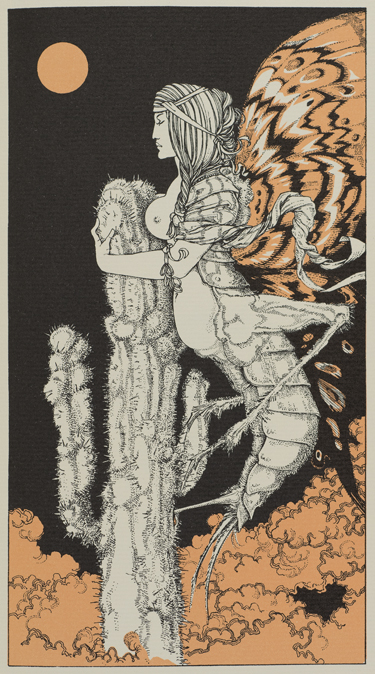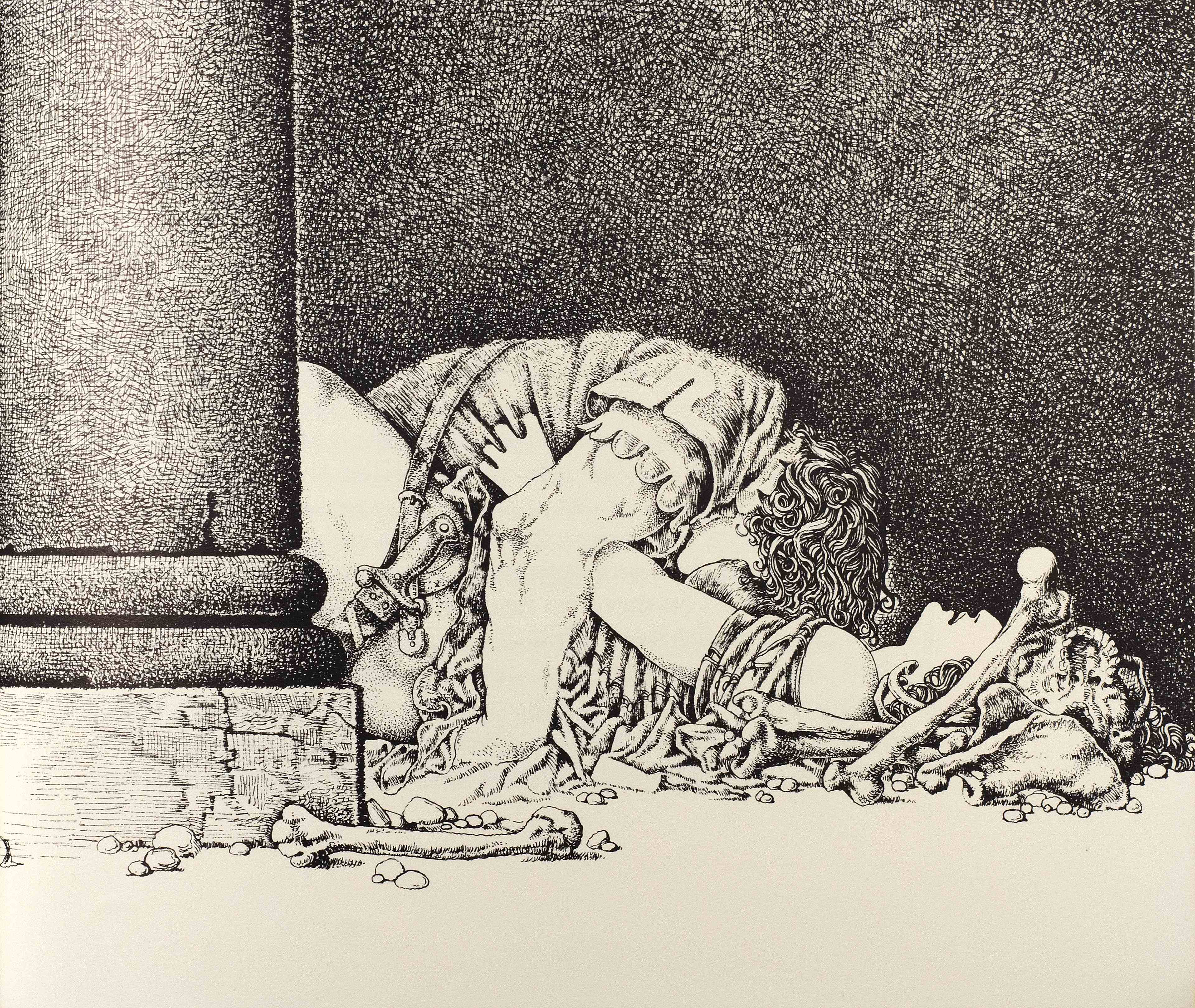Eroticism
Virgil Burnett understood eroticism as an expression of spiritual activity. In an interview, Burnett called erotic writing “one of the last great realms of spiritual expression.” His women are drawn full and sensuous, scantily clad in the garlands of myth and fantasy and sometimes featured in a variety of hybrid forms. Eroticism represents the human drive for an otherworldly ideal, a romantic impulse that survives today despite the changes of the modern world.Burnett’s erotic imagery, however, is neither simple nor retrogressive. Many of his erotic images at first appear to be products of a heterosexual, male gaze. Mainly women are eroticized and drawn in suggestive positions. The women appear in a variety of grotesque forms, giving material substance to their status as the “other.” Yet this traditional and problematic viewpoint is counteracted by images of strong, cunning female figures, who subvert male authority and whose complex sexual identity reveals itself upon closer inspection—as evidenced by this grasshopper-androgyne. The figure symbolically subverts male authority and "straight" sexuality through its mounting of an already phallic symbol, the cactus. The figure's androgyny is pervasive: its ostensibly female face is characterized by a strong, masculine bone structure, its arm is thick and brawny, yet its more lithe abdomen tapers off into a ovipositor functioning as a phallus. This fantastical hybrid is at once overcoming masculinity and becoming masculine.


